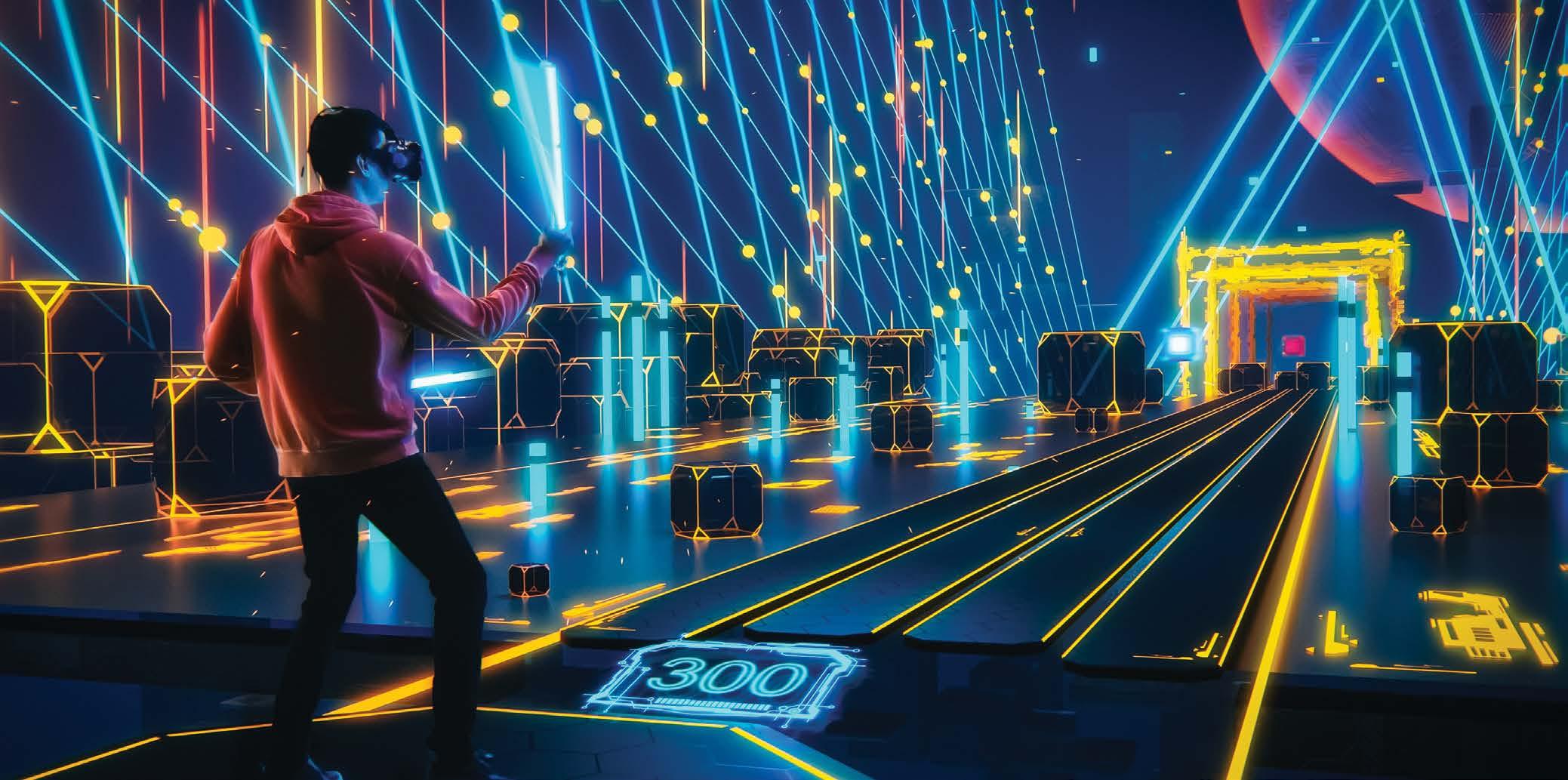
3 minute read
Metaverse could be a stepping stone to Immersive Computing It’ll be a whole new level of interaction
By Mayank Sharma
Speaking at the World Government Summit in February, Nick Clegg, Meta’s President of Global Affairs, discussed the world’s movement toward immersive computing platforms with Omar Sultan Al-Olama, UAE’s Minister of State for Artificial Intelligence. He noted that these platforms will allow users to interact with their surroundings in new and profound ways.
Advertisement
Immersive computing, which is pitched as a means to make digitized information more accessible, can be thought of as an extension to the metaverse. But what exactly is it, and how will it influence our interactions with a computing environment?
Thomas Bedenk, VP Extended Reality at Endava, said: “For me, immersive computing means that humans will have a different relationship with technology, by increasingly fading away the perceived interface in today’s way of interacting with computers.”
According to Bedenk, immersive computing will allow for direct access to content and more natural interactions, akin to those in a natural environment.
Greg Demchak, Senior Director, Digital Innovation Lab at Bentley Systems agrees, adding that immersive computing will not just open up new ways of interacting with digital content, but will also have a profound impact on the nature of these interactions.
“Rather than a mouse and keyboard, the input becomes hand gestures, eye gaze, head direction, and voice,” Demchak suggested. Furthermore, immersive computing has no physical limitations or content size restrictions, unlike traditional 2D computer screens. The content can expand to be as large as the environment the user navigates through.
Sensory encounter
According to Demchak, immersive computing is centered around the idea of being fully immersed in digital content.
Bedenk asserts that immersive computing does not need to be confined to our visual senses.
To illustrate the contrast between traditional computing and immersive computing, he gives the example of opening a virtual 3D door on a desktop computer. This involves interpreting a 2D image of a 3D door, navigating a cursor in 2D space, and clicking a mouse button to activate it. In contrast, within an immersive computing environment, users could simply approach the door and open it as they would in real life.
Richard Gardner, CEO and Founder of Anthrop LLC (DBA Anthropic AI), builds on this idea by suggesting that immersive computing will rely on Artificial Intelligence (AI), haptic feedback, and spatial computing to engage our senses. He believes that AI technology will enable the immersive environment to adapt to user behavior.
“This may play out in the adjustment of lighting, sound and other environmental factors, while natural language processing algorithms will surely have a place when users interact with virtual assistants and other entities. This could go beyond speech to include gesture and facial expression recognition,” Gardner said.
First contact
Our experts suggest that, in addition to simply enhancing current interactions, immersive computing has the potential to introduce entirely new dimensions of interactions, potentially even transcending the boundaries of the physical world.
“Maybe I don’t want to walk across the whole room to the trash can just to be able to throw away a piece of paper,” Bedenk explains. “In that sense immersive computing will allow us to behave and react in a natural way while also giving us super powers that extend beyond our physical capabilities or protect us from harm.”
Demchak asserts that this enhanced level of interaction can be applied to a variety of applications, particularly in regards to how users will interface with digital twin systems. To clarify, a digital twin refers to the digital model of a physical system. Recently, at the World Economic Forum in Davos, Abdullah Alswaha, the Saudi Minister of Communications and Information Technology, announced that the use of digital twin systems has already aided in optimizing planning and reducing the expenses of major infrastructure projects.
“With immersive computing, the digital twin becomes a method for interacting with the physical world using hand gestures and virtual interfaces that can exist anywhere in physical space,” Demchak says.


Creating the realm
Although the idea of an immersive experience sounds appealing, achieving it will require significant effort and resources.
“The biggest challenge today is the cost and computational requirements to bring holographic augmented reality to the mass market,” Demchak says.
Demchak suggests that developers must prioritize not only making the present generation of head-mounted devices more ergonomic, but also optimizing them to detect the wearer’s precise location in the world automatically, regardless of whether they are outdoors, indoors, or underground. This is a feat that cannot be achieved with current GPS technology.
“Advances in computer vision and AI are making headway, but we still have a way to go. A stepping stone can be the adoption of VR and AR tablets, and even the use of 2D screens on phones that can localize using something as simple as a QR code,” Demchak says.
Despite the challenges, our experts unanimously agree that the future of computing is immersive. Bedenk, for one, says that since we live in a spatial world, it’s only logical that computing will be spatial and immersive.
“Many associate immersive computing to gaming, but it could actually have far greater use cases in remote collaboration of working teams, while also offering training aids through simulation in industries like engineering and medicine,” Gardner says, peering into his crystal ball.










